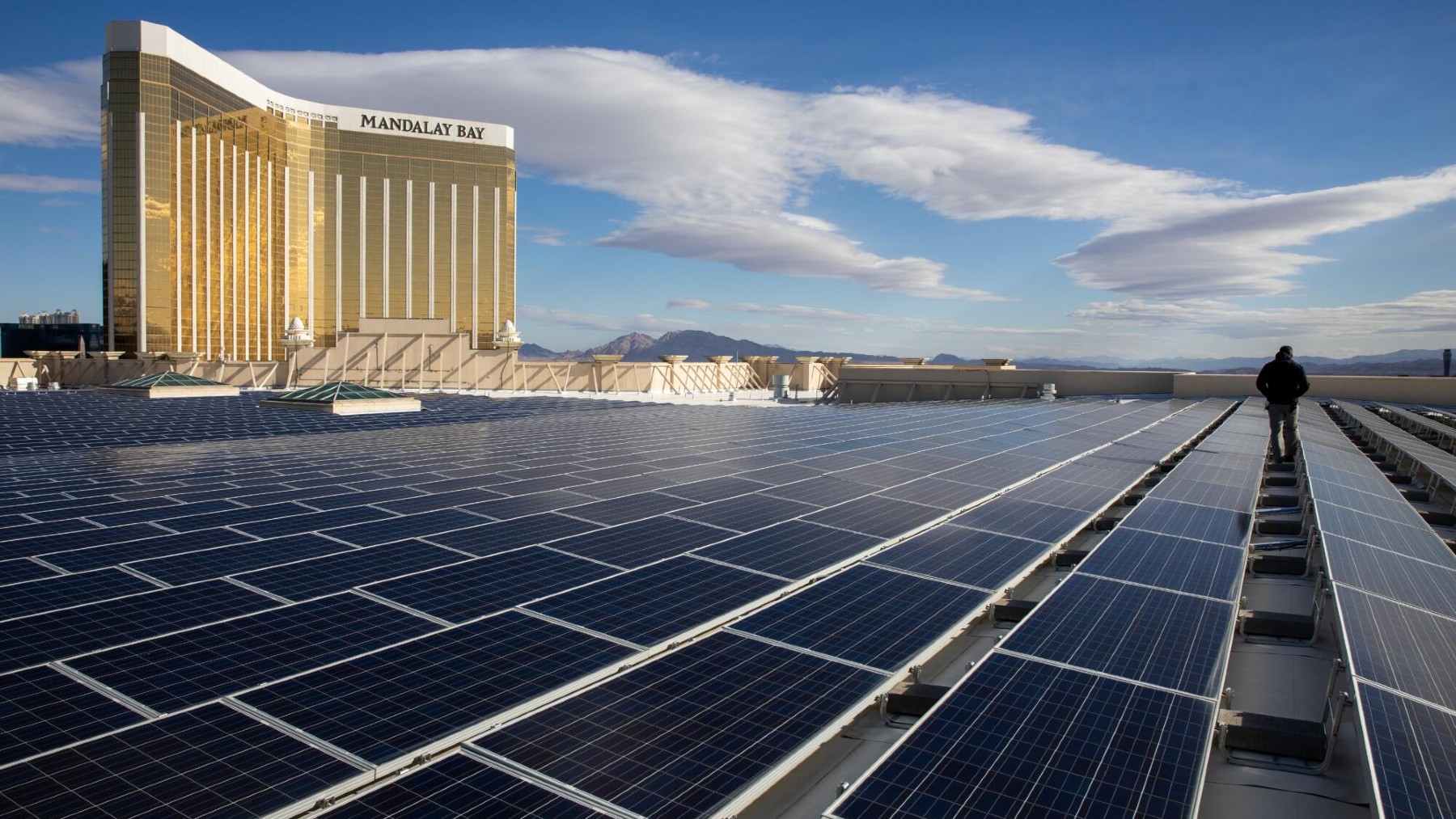Las Vegas covered with solar panels: the catastrophe we have caused in America – ECOticias
The search for the energy of the future has been hampered, paradoxically, by the unbridled ambition that many countries are putting into it. One of them, we have to admit, has been us in America. Remember the promising project to cover Las Vegas with solar panels? We have done it, and there are now more photovoltaic cells per person than anywhere else, but it’s not good news: this is the catastrophe we have caused.
Las Vegas covered with solar panels? Maybe it’s not the futuristic idea we thought it would be
About halfway between Los Angeles and Phoenix, in the midst of the Mojave Desert, there is a sky blue sea stretching as far as the eye can see. This sight, which can be seen from the I-10 highway, is a huge stretch of mirrors of solar panels stretching for miles over the Chuckwalla Valley.
However, although this picture looks almost idyllic, typical for a rural area, it conceals a rather fascinating complexity. Suspended over the Las Vegas Highway, 26,000 solar panels covered the roof of Mandalay Bay Convention Center, extending across the area measuring 8 football fields.
Even though it is a cold morning in the Mojave Desert, the plentiful sunlight charges the large solar panel. According to a study, Las Vegas now has more solar electricity per head than any other big American city, implying great prospects from both an economic and an anti-climate change viewpoint for cutting utility bills and cutting climate pollution.
Nevertheless, possible expansion of the fields for solar in the adjacent deserts has environmentally sensitive issues. Solar power development on these public lands, known as the portfolio of Biden’s administration’s management of public lands, has been opposed due to the impacts that may affect wildlife and their habitats.
Some keys to understanding the project: $3 billion and 45% of electricity generation
Ivanpah solar electric generating system is a concentrated solar power plant located in the Mojave Desert. It is at the foothills of Clark Mountain in California, right on the border of Nevada and Primm. The plant has a gross capacity of 392 MW, as is given by the following subsections:.
It contains 173,500 heliostats with each of which has two mirrors focusing heat energy onto the boilers situated on the three solar power towers, each with a height of 459 feet (140 meters). This is the $2 billion facility that was established by BrightSource Energy and Bechtel.
First proposed for large-scale solar generation by the Obama administration, the Mojave Desert is now hosting 15 solar projects, and many more are planned. Some of these projects, extending over an area of nearly 4,000 acres and with such folklore appellations as Athos and Oberon, could yield as much as 24 GW, which is enough to satisfy the needs of 7 million people.
What went wrong? More solar panels per person than in any other place in America
Finally, Kevin Emmerich of Basin & Range Watch, a non-profit organization that addresses causes of desert conservation, says that there are many issues with solar plants, namely, the annihilation of varieties of living creatures and the construction of lethal death traps for birds. He gives illustrations of endeavors that have leveled the vital space of endangered species, such as:
- The desert tortoise.
- Mojave fringe-toed lizards.
- The bighorn sheep.
A substantial part of the critical habitat for the species is dry woodland consisting of microphyll shrubs, Palo Verde, ironwood, cat claw and honey mesquite trees. Robin Kobaly, a botanist and the woman behind the Summertree Institute, claims that these small shrubs growing in deserts are far more important than people can even imagine
They are an immense carbon sink that links to the desert’s roots and stores carbon for thousands of years in the form of caliche. The desert flora also stores carbon through the use of glomalin – a protein that surrounds the fungal hyphae that are linked to the plants’ roots, so you can get an idea of the natural richness of this area.
The truth is that we should never have taken the placement of solar panels in Las Vegas to an extreme, with the Mojave Desert completely “destroyed” and a more serious impact on such a natural ecosystem than we could have imagined. What’s more, experts estimate that it will take several decades to reverse the damage caused to this space that was once recognized for its stunning natural state (well, and by UFO fanatics).


